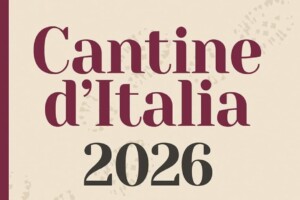The world continues to drink more Italian wine while Italians continue to drink less: Italian producers registered an internal decrease in 2007 but a marked increase of 7.8% for exports, following an impressive increase of 6.5% already in 2006. These exports earned a total value of almost 3.5 billion euros for the 19 million hectoliters sold, and an average increase in per bottle costs of 6.4% compared to 2006.
According to the general director of Vinitaly (one of the most important wine expos worldwide that is currently underway in Verona), Giovanni Mantovani, “This is a demonstration of the capacity of Italian winemakers to understand trends and to take advantage of the opportunities, because stopping to look within one’s own borders in a globalized market is not worth it. If in Italy less is consumed, in the rest of the world consumption is growing by 1.8 million hectoliters per year.
And while France has lost 6 percentage points on the global market over the last decade, Italy has managed to maintain a quota of 18%, leaving little space for the tough competition form the New World”.
It seems that even the battle with Australia for control of the U.S. market has been won by Italian winemakers, with over 2.5 million hectoliters sold (+8% from 2006) for a total value of almost 830 million euros.
There has also been an increase in exports towards emerging countries, with a 19% increase in quantity and +43% in value for Russia (283,000 hectoliters, worth over 57.5 million euros); +55% in value for China and +35.5% in Hong Kong (almost 15 million and over 6.6 million euros respectively); +1.2% in Japan (100.6 million euros); + 13% in India (1.6 million euros).
And those who are exporting are not just large companies but also small and medium-sized producers who, over the years, have understood how to profit from the many opportunities that Vinitaly has made available for promoting their wines with foreign buyers, with events like the “Vinitaly World Tour”, as well as the innovative “matching on-line”, where, on the Vinitaly web site (www.vinitaly.com) foreign traders can find a world of winemakers who export (even very small ones) with whom they can begin working relations with the “Buyer’s Club” and “business one to one” services.
15 Facts on Italian Wine...
World export totals for Italian wines: 10,000 million euros for 2007 (data source: Confagricoltura) Wine sector employees: 1.2 million (University of Bologna estimates)
Total vineyards in Italy: 827,000 hectares (Eurostat)
2007 Italian wine exports: +10.5% in value (from 2006) for a total worth of 3.3 billion euros and total volume 19 million hectoliters (ICE)
Main markets and export quotas for Italian wine: United States 25.6%, Germany 23.4%, Great Britain 12.5%, Switzerland 6.3%, Canada 5%, Japan 3.2%
(Vinicolo Unioncamere 2007 Report)
Wine ranking in Italian agriculture: Holds first place for export, and second place for earnings, responsible for 9.7% of total Italian agricultural earnings (Federalimentare e Confagricoltura)
Harvest production 2007: 40.5 million hectoliters (Assoenologi)
Number of Denomination of Controlled Origin wines: 353 Denomination of Controlled Origin Wines, 36 Typical
Geographic Indication Wines
Per capita wine consumption in Italy: 48.2 liters
Wine tourists in Italy: 3.5 million
Wine tourism earnings: 2.5 billion euros
Most requested grape varietals at nurseries: red grape varietals (74%) - Sangiovese, Cabernet Sauvignon, Merlot, Montepulciano
Italian use of cork-wood corks: 1.5 billion corks Research and elaboration of data by www.winenews.it
Copyright © 2000/2025
Contatti: info@winenews.it
Seguici anche su Twitter: @WineNewsIt
Seguici anche su Facebook: @winenewsit
Questo articolo è tratto dall'archivio di WineNews - Tutti i diritti riservati - Copyright © 2000/2025








































































































































































































